Connectors, also known as conjunctions or linking words, are words or phrases that are used to connect different parts of a sentence or different sentences together. They play a crucial role in creating coherence and cohesion in written and spoken English. Connectors help to establish relationships between ideas, show contrast or similarity, provide examples, indicate cause and effect, and convey additional information.
Some common examples of connectors include:
Coordinating Conjunctions:
Coordinating conjunctions are used to join words, phrases, or independent clauses of equal importance.
(and, but, or, so, for, nor, yet)
- I like coffee and she likes tea.
- He studied hard, but he still failed the exam.
- Would you like coffee or tea?
- It was raining, so we decided to stay indoors.
- I went to the store because I needed some groceries.
- She neither smiled nor greeted us.
Subordinating Conjunctions:
Subordinating conjunctions are used to join subordinate clauses to main clauses, creating complex sentences.
(although, because, if, since, unless, until, when, while, whereas, though, even though, after, before, once, wherever, whether, as)
- Although it was raining, we decided to go for a walk.
- I will study hard because I want to get good grades.
- She couldn’t attend the party since she had a prior commitment.
- After the movie ended, we went out for dinner.
- He passed the test even though he didn’t study much.
- Unless you apologize, I won’t forgive you.
- I’ll buy the dress provided that it’s on sale.
- The team won the championship as long as they played as a unit.
- She went to bed early because she was feeling tired.
- We’ll go swimming once the weather improves.
Correlative Conjunctions:
Correlative conjunctions are pairs of words used to connect similar grammatical elements within a sentence.
(both…and, either…or, neither…nor, not only…but also, whether…or)
- Either you study for the test, or you’ll fail.
- Both the parents and the teacher were concerned about the student’s behavior.
- Not only did she finish the project on time, but she also exceeded expectations.
- Neither the team captain nor the coach was satisfied with the performance.
- Whether we go to the beach or stay at home depends on the weather.
- Neither the book nor the movie captured the true essence of the story.
Comparative and Contrastive Connectors:
(whereas, while, unlike, compared to, on the contrary, in contrast, similarly, likewise, by comparison, similarly, alternatively, on the other hand)
- Both dogs and cats make great pets. Similarly, they provide companionship and love.
- She enjoys playing the piano. Likewise, her sister is passionate about playing the guitar.
- In comparison to last year, this year’s sales have increased by 20%.
- Just as the sun sets in the west, the moon rises in the east.
- He is talented and hardworking. On the other hand, his brother is laid-back and less motivated.
- In contrast to the sunny weather yesterday, today is cloudy and rainy.
- She loves outdoor activities; however, her brother prefers indoor hobbies.
- The team faced numerous challenges. Nevertheless, they persevered and achieved their goals.
- Some people enjoy city life; conversely, others prefer the tranquility of rural areas.
- She studied hard and prepared well; therefore, she aced the exam.
- The team failed to meet the deadline; consequently, the project was delayed.
- The company implemented cost-cutting measures; as a result, they were able to increase their profit margins.
- The battery died; thus, the device stopped working.
- The company experienced a decline in sales; accordingly, they had to lay off some employees.
- He didn’t get enough sleep last night; consequently, he felt tired and groggy all day.
- The bus arrived late; hence, I missed my appointment.
- She couldn’t attend the meeting because of a family emergency.
Time Connectors:
(after, before, during, while, since, until, as soon as, whenever, now that, then, at the same time, immediately, later, meanwhile, next, finally)
- First, I will introduce myself to the audience.
- The chef was busy preparing the main course. Meanwhile, the waitstaff set the tables.
- First, we need to analyze the data. Next, we will present our findings.
- He attended the meeting, and afterward, he met with his colleagues for coffee.
- She studied hard, practiced diligently, and finally, she won the competition.
- She missed the bus, so she had to take a taxi later.
- The team lost the first match, and subsequently, their morale was low.
- The repair will take a few hours. In the meantime, you can use the spare computer.
- She was typing an email, while simultaneously talking on the phone.
- She tried several recipes, and at last, she found the perfect one.
Condition Connectors:
(if, unless, whether, provided that, as long as, in case, on condition that, supposing, assuming)
- If you study hard, you will pass the exam.
- Unless you finish your homework, you can’t go out to play.
- You can borrow my car provided that you return it by Friday.
- I brought some extra batteries in case the remote control dies.
- They agreed to sign the contract on the condition that certain terms were met.
- She accepted the invitation assuming that her schedule allows it.
- I will support you even if others disagree.
- I’m fine with any restaurant as long as they serve vegetarian options.
- We should have a backup generator in the event that the power goes out.
- Suppose you win the lottery, what would you do with the money?
- We saved money in order to go on vacation.
- She woke up early so that she wouldn’t miss the bus.
- The survey was conducted for the purpose of gathering customer feedback.
- The company implemented cost-cutting measures in order to achieve financial stability.
- She adjusted her diet so as to maintain a healthy lifestyle.
Addition Connectors:
(and, in addition, also, moreover, furthermore, besides, as well as, not to mention, along with)
- Furthermore, the company plans to expand its operations internationally.
- Moreover, the team implemented new strategies to improve productivity.
- Additionally, the study found a significant increase in customer satisfaction.
- In addition to the current benefits, employees will receive a bonus this year.
- Besides, the software update also includes enhanced security features.
- Not only did she complete the project ahead of schedule, but she also exceeded expectations.
- Furthermore, the survey results revealed a strong correlation between exercise and mental well-being.
- Moreover, the company announced a partnership with a leading technology provider.
- Additionally, the event will feature guest speakers from various industries.
- In addition to her academic achievements, she is also an accomplished musician.
Illustration Connectors:
(for example, for instance, such as, to illustrate, as revealed by)
- “For example, I enjoy outdoor activities such as hiking, swimming, and cycling.”
- “For instance, some popular social media platforms, such as Facebook, Twitter, and Instagram, have billions of active users.”
- “I have a wide range of hobbies, such as painting, playing the guitar, and cooking, to illustrate my creative side.”
- “To illustrate the concept of supply and demand, let’s consider the market for smartphones.”
- “As revealed by the latest research, regular exercise can significantly reduce the risk of heart disease.”
These examples cover a wide range of connectors used in English to establish various relationships between ideas, sentences, or clauses. Remember that the choice of connector depends on the context and the specific relationship you want to convey.

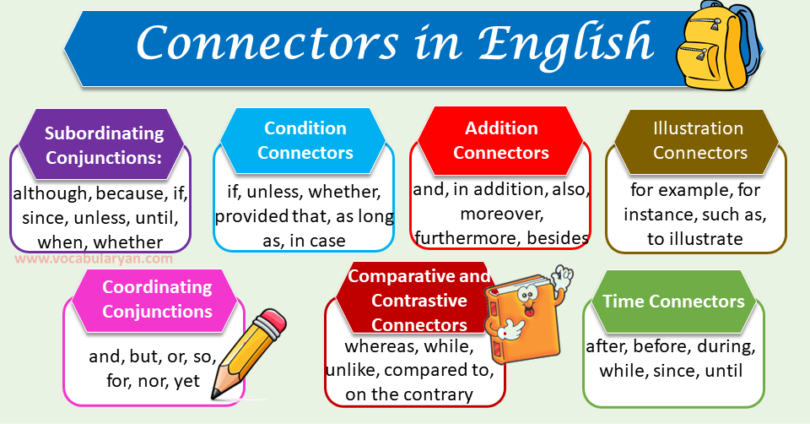




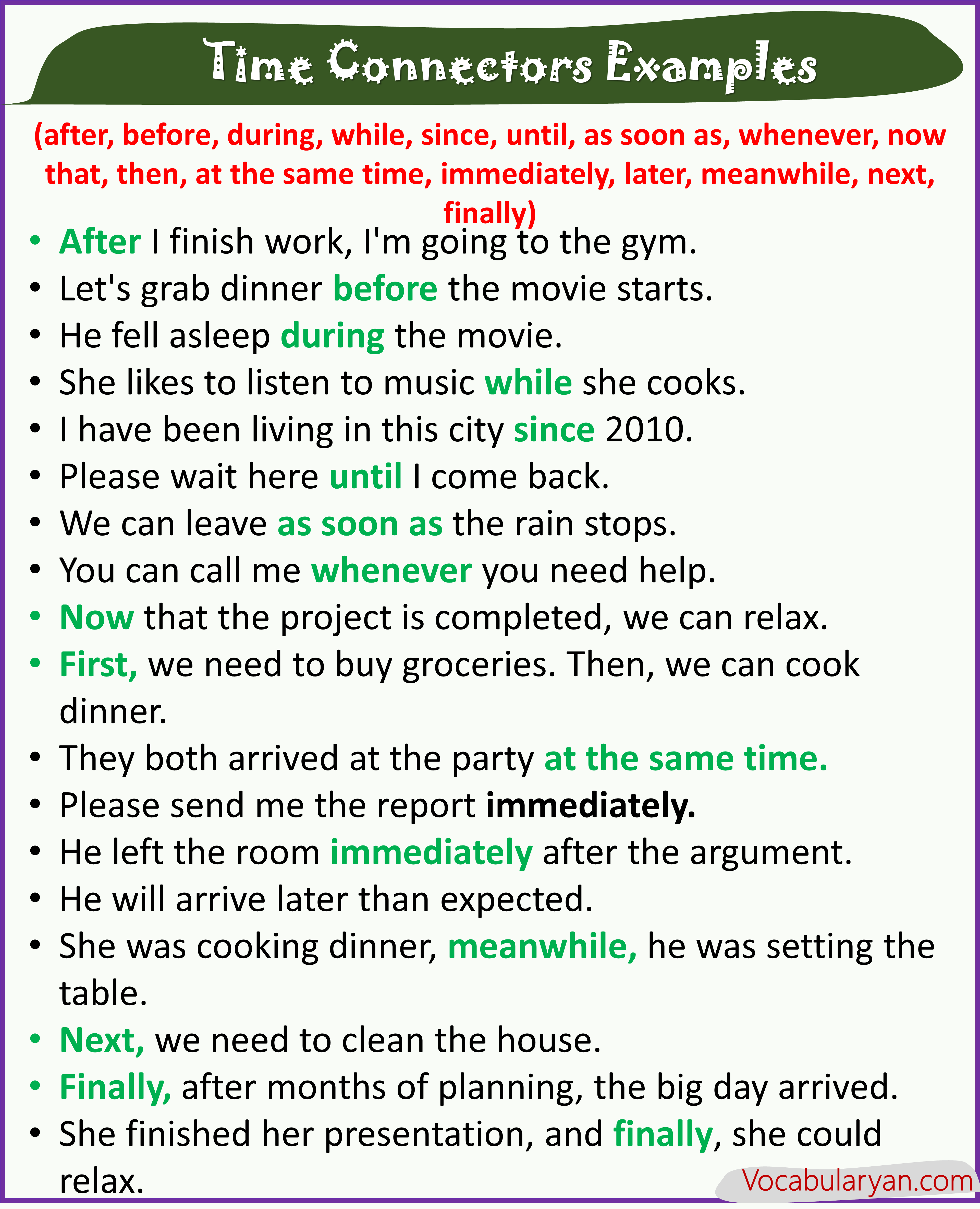
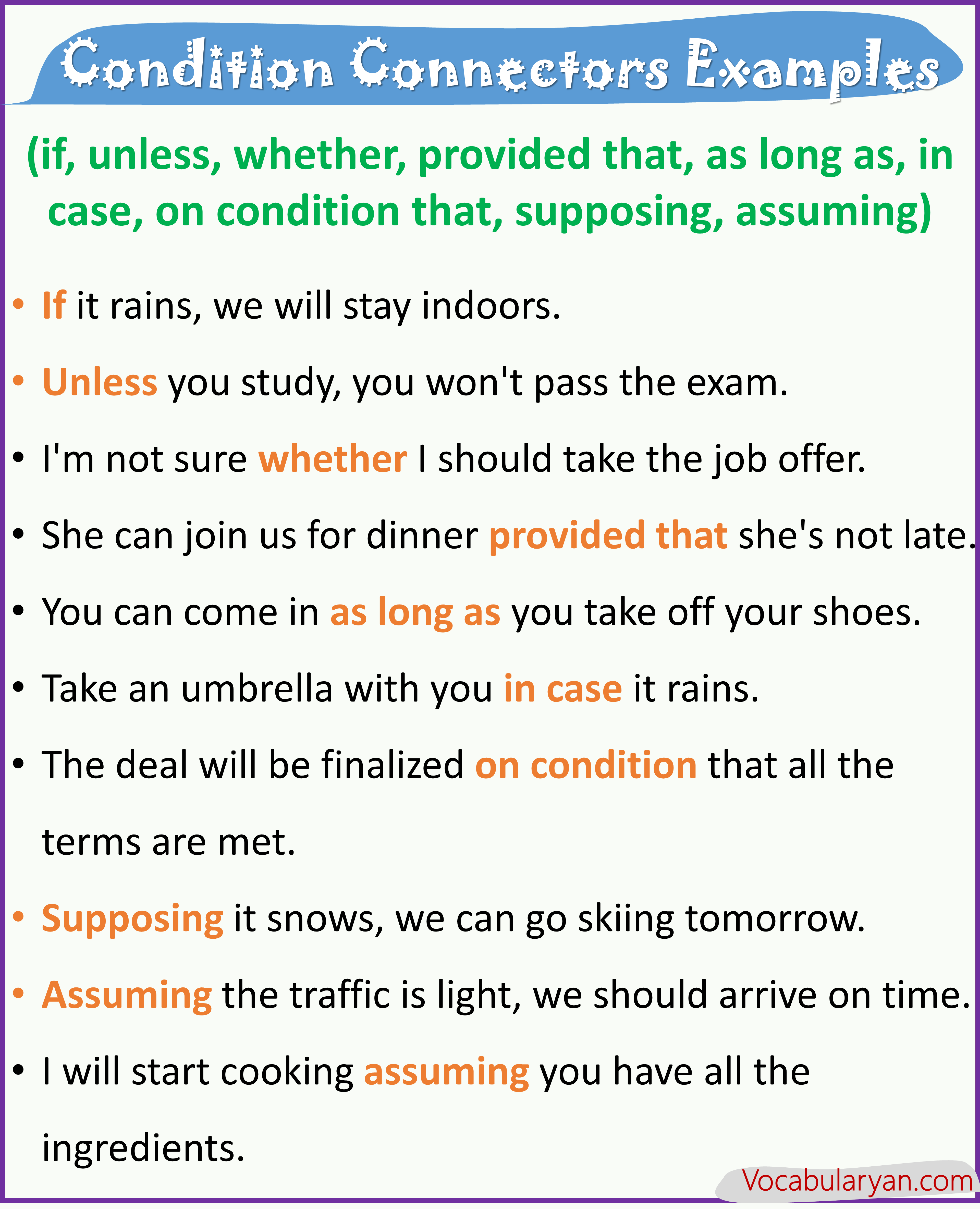

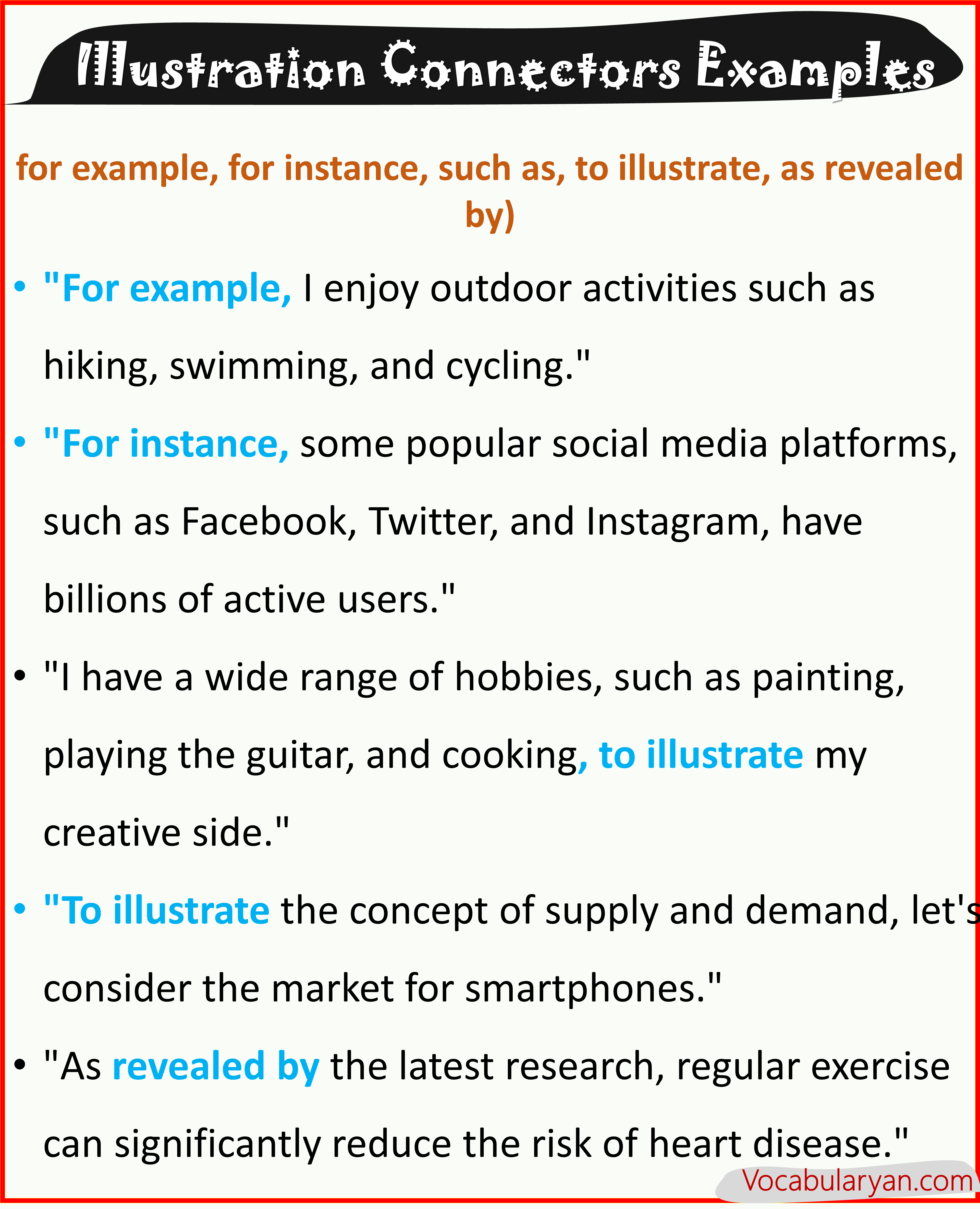
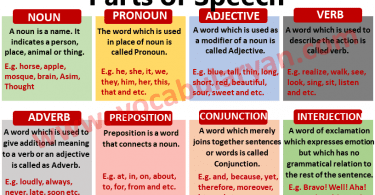
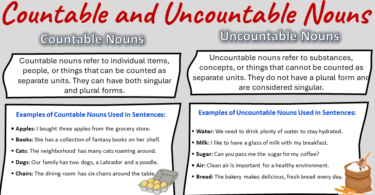
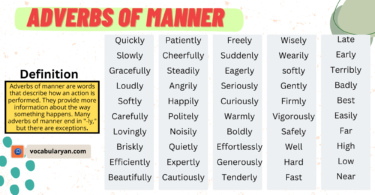
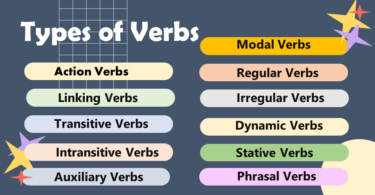
Leave a Comment